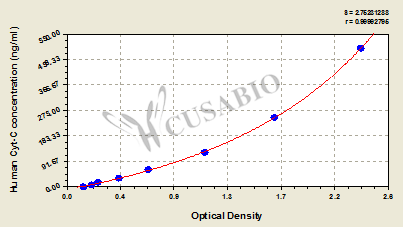The human CYCS ELISA kit is a solid-phase immunoassay specially designed to quantitatively measure human CYCS in serum, plasma, or cell lysates. It is based on the Sandwich-ELISA mechanism. CYCS in the sample is bound to the capture antibody immobilized on the 96-well strip plate and then sandwiched with the biotinylated CYCS antibody. After the addition of HRP-avidin and TMB substrate, the solution in the wells turns blue. The color reaction is stopped by adding the stop solution into the wells, and the color changes from blue to yellow. The color intensity is positively proportional to the CYCS bound in the initial step. The CYCS concentration can be calculated according to the standard curve. This kit is tested with high sensitivity, strong specificity, good linearity, high precision and recovery, as well as lot-to-lot consistency.
CYCS is renowned for its role in the mitochondria participating in the life-supporting function of ATP synthesis. It is essential in mitochondrial electron transport and intrinsic type II apoptosis. It carries electrons from one complex of integral membrane proteins of the inner mitochondrial membrane to another. Free CYCS functions as a radical scavenger within the inner-membrane space by removing unpaired electrons from superoxide thus regenerating O2. Mammalian CYCS also clears ROS under healthy conditions, produces ROS with the co-factor p66Shc, and oxidizes cardiolipin during apoptosis.






